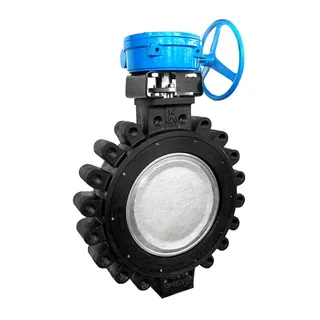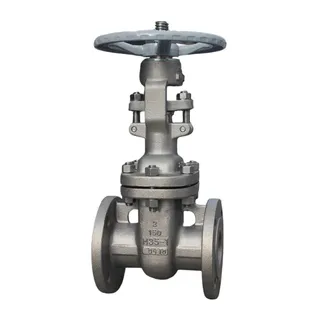In industrial production, air conditioning systems, water treatment, and many other fields, Y-type strainers play an indispensable role. It is a kind of pipeline coarse filter that can effectively remove larger solid impurities in the fluid, thereby ensuring the normal operation of machinery, instruments, and other equipment, stabilizing the process, and ensuring safe production. This article will provide a detailed introduction to the installation essentials of the Y-type strainer, helping you make better use of its function and ensure the cleanliness of the medium inside the system.
The core principle of the Y-type strainer is to intercept impurities in the fluid through its internal mesh. When the fluid enters the filter barrel with a filter screen of a certain size, impurities are blocked, while clean liquid is discharged from the outlet of the filter. This type of strainer has a simple structure and is very easy to use and maintain. When cleaning is needed, you only need to remove the detachable filter barrel, clean it, and put it back in place.
In practical applications, the function of the Y-type strainer is extremely important. It can protect equipment such as compressors, pumps, and instruments from damage caused by impurities, extend the service life of equipment, and reduce the frequency of equipment failures, thereby lowering maintenance costs and downtime. For example, in air conditioning systems, cooling towers often contain suspended solids and particulate impurities. By installing a Y-type strainer on the return water pipeline, it can effectively protect the air conditioning unit from clogging and ensure the normal operation of the system.
The correct installation direction and position are the foundation for ensuring that the Y-type strainer performs at its best. Only by installing the strainer in the proper location and according to the correct direction can it function properly in filtering impurities and protecting equipment.
The installation direction of the Y-type strainer needs to be determined according to the nature of the fluid and the layout of the pipeline. Details are as follows:
Steam or gas pipelines: The mesh should be installed horizontally. This is because the flow characteristics of steam and gas differ from those of liquids, and horizontal installation can better adapt to their flow conditions, preventing impurities from accumulating at the bottom of the mesh.
Liquid pipelines: The mesh should face downward. This allows gravity to help impurities settle naturally below the mesh, making subsequent cleaning easier.
Vertical installation: It should be determined based on the flow direction of the strainer. If the medium flows from top to bottom, impurities inside the mesh will accumulate in the mesh, and when the medium stops or flows backward, they will not return to the pipeline. This installation method is acceptable. However, if the medium flows from bottom to top, impurities may be flushed back into the pipeline when the medium stops or flows backward, which may cause potential failures in pumps and valves; therefore, this installation method is not allowed.
When installing a Y-type strainer, its specific position in the pipeline system must also be considered. The following are key points:
Matching with equipment: The strainer should be installed at the inlet of equipment such as pumps and compressors. This ensures that the fluid entering the equipment has been pre-filtered, reducing the risk of damage caused by impurities. For example, when used together with water treatment equipment, it should be installed before the inlet of the water treatment unit.
Bypass arrangement: It is recommended to install bypass pipelines upstream and downstream of the strainer. This allows switching to the bypass during cleaning or failure of the strainer, ensuring the normal operation of the system and avoiding interruption of the production process.
Maintenance space: Be sure to reserve sufficient maintenance space during installation. Generally, it is recommended to reserve at least 50 cm of operation distance to facilitate maintenance and servicing when needed.
Before officially installing the Y-type strainer, adequate preparations must be made to ensure the installation process goes smoothly and the installation quality is guaranteed.
Before installation, first inspect the Y-type strainer itself. The inspection contents include:
Appearance inspection: Check whether the shell of the strainer is damaged or deformed. Pay particular attention to the cast iron wire mesh on the filter core, ensuring it is not deformed or damaged. If deformation or damage to the galvanized wire mesh is found, it must be replaced immediately; otherwise, it will affect the filtering performance and may cause equipment damage.
Size verification: Verify whether the dimensions of the strainer match the pipeline system, including the diameter of the inlet and outlet and the connection type (such as threaded or flanged connections). If the dimensions do not match, it may lead to installation difficulties or even make installation impossible.
Before installing the Y-type strainer, the pipeline must be checked and cleaned. Check whether there are impurities or foreign objects inside the pipeline. If any are found, they must be cleaned first, as these impurities may enter the strainer during installation, affecting filtering performance or even damaging the strainer.
Prepare the tools and materials required for installation, such as wrenches, sealant, and PTFE tape. These will be needed during installation, and preparing them in advance can prevent interruptions during the process.
Every detail in the installation process may affect the performance and service life of the strainer, so each step must be carried out carefully. The following are some points that require special attention during installation.
During installation, make sure that the arrow direction marked on the strainer housing (horizontal or downward) is consistent with the flow direction of the medium. This is key to ensuring normal operation. If the arrow direction does not match the flow direction, impurities may not be effectively intercepted, or the strainer may even be damaged.
Threaded connection: If the strainer uses a threaded connection, PTFE tape or sealant should be applied to the joints. This ensures sealing at the connection, prevents fluid leakage, and avoids impurities from entering the joint and clogging the pipeline.
Flanged connection: For flanged connections, the bolts must be tightened evenly to prevent leakage or damage due to uneven stress.
To better determine the clogging condition of the strainer, a differential pressure gauge or pressure gauge can be installed upstream and downstream. When a significant pressure difference is observed, it indicates that a large amount of impurities has accumulated on the mesh, requiring timely cleaning. This helps identify problems early and prevents operational issues caused by clogging.
Intermittent operation: In intermittent operation, shut-off valves should be installed before and after the Y-type strainer. This allows the flow to be stopped for maintenance by closing the valves when cleaning is required.
Continuous operation: For continuously running systems, two Y-type strainers should be installed in parallel, each with shut-off valves before and after (except for slit-type filters). This ensures that one strainer can continue operating while the other is cleaned or repaired, maintaining uninterrupted system operation.
After installation, a series of inspections and tests must be performed to ensure proper operation.
Inspect the sealing between the strainer and pipeline to ensure there is no leakage. Soap solution can be used for detection, if bubbles appear, leakage exists and must be resealed.
Verify again that the flow direction of the strainer is correct. Ensure that the fluid passes through the strainer in the proper direction to achieve the best filtering effect.
After confirming that sealing and flow direction are correct, start the system for commissioning. Observe the strainer's operating condition and check whether the readings of pressure gauges or differential pressure gauges are normal. If any abnormality occurs, such as irregular pressure changes or fluid leakage, stop the system immediately and correct the issue.
In practical applications, some special conditions may occur. These require additional measures to ensure proper installation and stable operation of the strainer.
When installing large-diameter socket-welded Y-type strainers, in addition to the above precautions, special attention should be paid to the material. If the strainer is made of non-metallic material, it may be damaged by overheating. Therefore, after welding is completed, the strainer should be cooled quickly to shorten the welding time and avoid damage.
For some special media, such as corrosive liquids or high-temperature gases, appropriate protective measures must be taken when installing the Y-type strainer. For instance, select a strainer material suitable for the medium to ensure that it can withstand corrosion or high temperature.
As an important pipeline coarse filter, the Y-type strainer plays a significant role in industrial production, air conditioning systems, and water treatment. Proper installation and maintenance of Y-type strainers can effectively remove impurities in the fluid, ensure the normal operation of equipment, extend service life, and reduce maintenance costs. During installation, attention must be paid to installation direction, connection method, and sealing treatment. Post-installation inspection and commissioning are also necessary. Regular maintenance and servicing are key to ensuring long-term stable operation. It is hoped that this article will help you install and use Y-type strainers more effectively, ensuring the safety and efficiency of your system.



